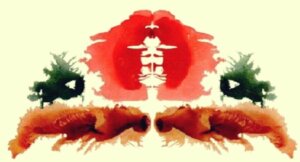The Zulliger Test for Job Recruitment


Written and verified by the psychologist Valeria Sabater
The Z-test, or the Zulliger test, is a projective test that was developed in 1942. At first glance, it’s easily confused with the Rorschach test, which many more people are familiar with. The Zulliger test, however, doesn’t follow the same protocol and has some advantages over its more famous cousin. It’s much easier to administer and its interpretation parameters are quicker.
The goal of the test is the same as any other projective test: to describe personality traits using a psychoanalytical approach. As a result, it’s easy to understand why the test has plenty of critics these days but that doesn’t make it any less interesting. In fact, one of its most common uses is as a tool for candidate selection during the hiring process.
One positive aspect of this test that puts it head and shoulders above other projective tests such as the Draw-a-Person-in-the-Rain test, the Baum test, and the Murray test is that data backs up its validity. Statistical studies of the test give it a robustness that makes it useful for the human resources department.

The Zulliger test: what it evaluates and how employers use it
The fact that the Zulliger test reminds you of the Rorschach test isn’t a coincidence. Hans Zulliger, the Swiss psychiatrist who developed the test, was one of Hermann Rorschach‘s students. If there’s a thing that Dr. Zulliger is known for, it’s his influential work as a child psychoanalyst as well as being a promotor of psychoanalytical pedagogy.
Before the height of his career, he spent several years working with Rorschach. His purpose was to gain a deeper understanding of human personality using the classic inkblot test. Another external factor helped shape his professional career: World War II. When the war started, the Swiss army was looking for tests to help with recruitment and Hans Zulliger was the man for the job.
Zulliger administered intelligence tests, personality tests, and even Rorschach tests. He realized, however, that the inkblot tests were far too complex to use efficiently. What the army needed at that time was efficiency, speed, and the ability to administer the test to an average of 30 people at a time.
It didn’t take him long to develop a new test. Let’s take a look at what his new test entails.
What does the Zulliger test evaluate?
The Zulliger test is a projective test. What does that mean? It means that the instrument at hand provides a lot of subjective answers. The answers come from stimuli that awaken the imagination of the test-taker, as well as their sensitivity, desires, personality traits, etc.
- What differentiates this test from other tests of its kind is its validity and ease of application.
- Zulliger designed a test that made it possible to quickly determine whether or not individuals had psychological problems. The test also helped identify if the test-taker had good skills for certain roles in the army.
- The test also helped evaluate an individual’s mental processes: their fears, social adaptation, emotional world, and self-control.
- Today, many human resources departments use the Zulliger test in hiring processes.
How does the test work?
The test can be taken individually or as a group. In both cases, the test-taker is presented with three inkblots. The person administering the test explains that the images don’t have any concrete meaning, but they tend to evoke different things in each person. The test-taker has to explain what they see in each inkblot.
- The first inkblot is black and white. It’s the most compact and test-takers usually interpret it as just one concept. It represents an individual’s profound thinking.
- The second is a more interesting image because it uses several bright colors and is more complex. This inkblot tends to evoke more sensations and emotions in the test-taker. The way the individual interprets this image usually has to do with skills, order, self-control, etc.
- The last inkblot is gray, black, and red. It’s suggestive of dynamism and movement and relates to social relationships.
When the test-taker is done writing out the ideas, feelings, and images that each inkblot triggers, it’s time to talk. Each individual explains to the therapist or psychologist what they see in each detail of the inkblot.
How is it evaluated?
Only skilled professionals who are well-versed in this test are qualified to interpret it. It would be futile and useless for a layperson to try it. An understanding of projective tests and experience with the Zulliger test is crucial.
- The test doesn’t have right or wrong answers.
- The person administering the test analyzes the individual’s reaction to the inkblots as well as the way they express themselves. The greater the level of detail and feelings the subject expresses, the higher the number of points. They also evaluate originality, psychological coherence, self-perception, thinking style, etc.
It’s worth mentioning that, while this is a projective test with clearly subjective answers, it provides a general idea of the individual’s inner life and personality.
Today, many companies use the Zulliger test during the hiring process, along with other tests. Even though it was developed more than eight decades ago, it’s still an interesting and useful tool.
All cited sources were thoroughly reviewed by our team to ensure their quality, reliability, currency, and validity. The bibliography of this article was considered reliable and of academic or scientific accuracy.
- Muñoz, Mora Luis. El Test de Zulliger: Evaluado bajo el Sistema Comprehensivo de Exner, Edición Digital.
- Redondo, Ana Isabel. Estadísticos descriptivos en respuestas al Test de Zulliger en personas de 31 a 40 años, en situación de selección de personal.
This text is provided for informational purposes only and does not replace consultation with a professional. If in doubt, consult your specialist.








